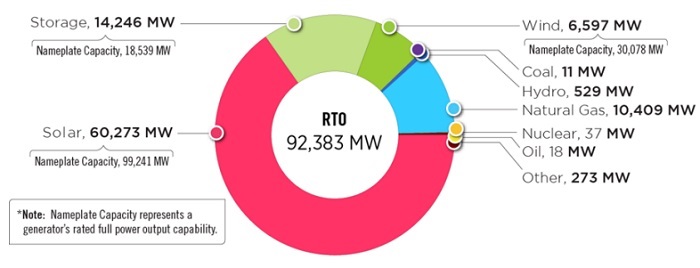S. Himmelstein | July 13, 2022
The PJM Interconnection, the largest grid operator in the U.S., has developed a roadmap to address anticipated changes affecting its system, including the likely retirement of fossil-fueled generation, growth in renewable energy and storage, and the electrification of the transportation and building sectors.
The Grid of the Future report details how PJM Interconnection plans to use scenario-based transmission planning, conduct targeted reliability studies and consider ways to reflect extreme weather risks in its analyses. Major changes facing the grid operator include the potential addition of an estimated 105,000 MW of onshore and offshore wind and solar capacity during the next 15 years, in addition to the 15,000 MW already in service. Targeted reliability studies will be conducted to evaluate generation and transmission reliability attributes, such as reactive control, stability, system inertia and frequency control, and short-circuit impacts to ensure reliable operations.
 Current PJM generator interconnection request queue by fuel type. Source: PJM Interconnection
Current PJM generator interconnection request queue by fuel type. Source: PJM Interconnection
Its regional transmission expansion planning process will continue to evolve, including through initiatives already underway such as interconnection reform, generator deliverability methodology improvement, effective load carrying capability methodology development and probabilistic planning technique implementation.
Other new tools designed to guide interconnection priorities and policies also include improved forecasting and grid visibility to determine how resources, such as electric vehicle chargers, are operating.
